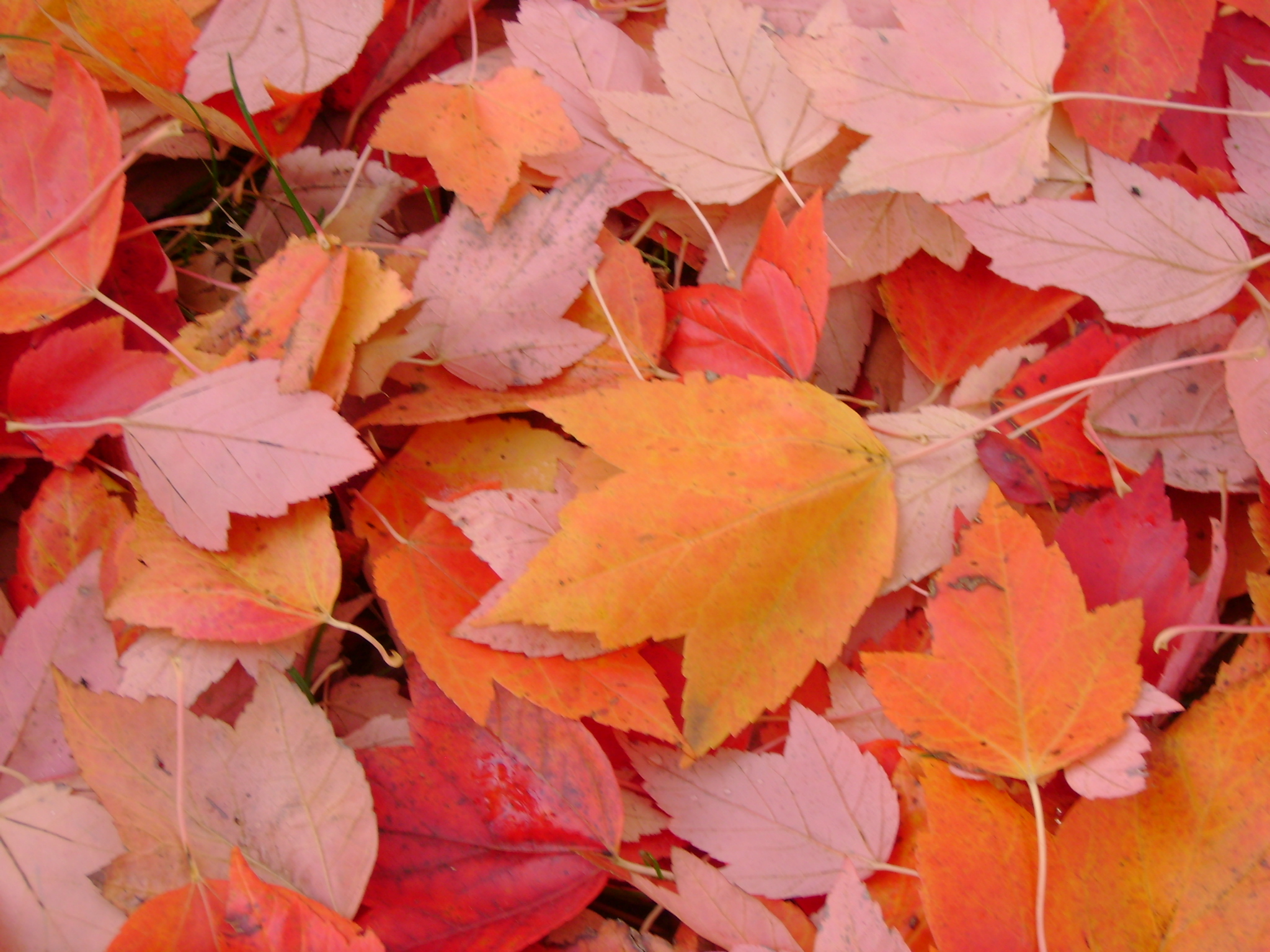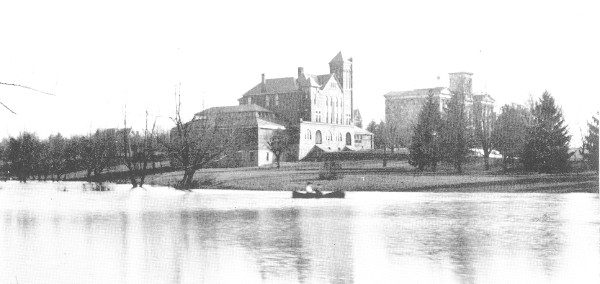|
Leaf Scorch
Leaf scorch (also called leaf burn, leaf wilt, and sun scorch) is a browning of plant tissues, including leaf margins and tips, and yellowing or darkening of veins which may lead to eventual wilting and abscission of the leaf. Causes Leaf scorch can be caused by soil compaction (agriculture), soil compaction, transplant shock, nutrient deficiency, nutrient excess, drought, salt toxicity, herbicide injury, and disease injury.Treatment Affected plants may sometimes recover through watering and fertilization (if the cause is not over-fertilization). Light pruning may also help to reduce the water-pumping load on the roots and xylem.[...More Info...] [...Related Items...] OR: [Wikipedia] [Google] [Baidu] |
Wilting
Wilting is the loss of rigidity of non-woody parts of plants. This occurs when the turgor pressure in non- lignified plant cells falls towards zero, as a result of diminished water in the cells. Wilting also serves to reduce water loss, as it makes the leaves expose less surface area. The rate of loss of water from the plant is greater than the absorption of water in the plant. The process of wilting modifies the leaf angle distribution of the plant (or canopy) towards more erectophile conditions. Lower water availability may result from: * drought conditions, where the soil moisture drops below conditions most favorable for plant functioning; * the temperature falls to the point where the plant's vascular system cannot function; * high salinity, which causes water to diffuse from the plant cells and induce shrinkage; * saturated soil conditions, where roots are unable to obtain sufficient oxygen for cellular respiration, and so are unable to transport water into the plant; ... [...More Info...] [...Related Items...] OR: [Wikipedia] [Google] [Baidu] |
Abscission
Abscission () is the shedding of various parts of an organism, such as a plant dropping a leaf, fruit, flower, or seed. In zoology, abscission is the intentional shedding of a body part, such as the shedding of a claw, husk, or the autotomy of a tail to evade a predator. In mycology, it is the liberation of a fungal spore. In cell biology, abscission refers to the separation of two daughter cells at the completion of cytokinesis. In plants Function A plant will abscise a part either to discard a member that is no longer necessary, such as a leaf during autumn, or a flower following fertilisation, or for the purposes of reproduction. Most deciduous plants drop their leaves by abscission before winter, whereas evergreen plants continuously abscise their leaves. Another form of abscission is fruit drop, when a plant abscises fruit while still immature in order to conserve resources needed to bring the remaining fruit to maturity. If a leaf is damaged, a plant may also abscise i ... [...More Info...] [...Related Items...] OR: [Wikipedia] [Google] [Baidu] |
Soil Compaction (agriculture)
Soil compaction, also known as soil structure degradation, is the increase of bulk density or decrease in porosity of soil due to externally or internally applied loads. Compaction can adversely affect nearly all physical, chemical and biological properties and functions of soil. Together with soil erosion, it is regarded as the "costliest and most serious environmental problem caused by conventional agriculture." In agriculture, soil compaction is a complex problem in which soil, crops, weather and machinery interact. External pressure due to the use of heavy machinery and inappropriate soil management can lead to the compaction of subsoil, creating impermeable layers within the soil that restrict water and nutrient cycles. This process can cause on-site effects such as reduced crop growth, yield and quality as well as off-site effects such as increased surface water run-off, soil erosion, greenhouse gas emissions, eutrophication, reduced groundwater recharge and a loss of bio ... [...More Info...] [...Related Items...] OR: [Wikipedia] [Google] [Baidu] |
Herbicide
Herbicides (, ), also commonly known as weed killers, are substances used to control undesired plants, also known as weeds.EPA. February 201Pesticides Industry. Sales and Usage 2006 and 2007: Market Estimates. Summary in press releasMain page for EPA reports on pesticide use ihere Selective herbicides control specific weed species while leaving the desired crop relatively unharmed, while non-selective herbicides (sometimes called "total weed killers") kill plants indiscriminately. The combined effects of herbicides, nitrogen fertilizer, and improved cultivars has increased yields (per acre) of major crops by three to six times from 1900 to 2000. In the United States in 2012, about 91% of all herbicide usage, was determined by weight applied, in agriculture. In 2012, world pesticide expenditures totaled nearly US$24.7 billion; herbicides were about 44% of those sales and constituted the biggest portion, followed by insecticides, fungicides, and fumigants. Herbicide is also used ... [...More Info...] [...Related Items...] OR: [Wikipedia] [Google] [Baidu] |
Purdue University
Purdue University is a Public university#United States, public Land-grant university, land-grant research university in West Lafayette, Indiana, United States, and the flagship campus of the Purdue University system. The university was founded in 1869 after Lafayette, Indiana, Lafayette businessman John Purdue donated land and money to establish a college of science, technology, and agriculture; the first classes were held on September 16, 1874. Purdue University is a member of the Association of American Universities and is Carnegie Classification of Institutions of Higher Education, classified among "R1: Doctoral Universities – Very high research activity". Purdue enrolls the largest student body of any individual university campus in Indiana, as well as the ninth-largest foreign student population of any university in the United States. The university is home to the oldest computer science Purdue University Department of Computer Science, program in the United States. Pur ... [...More Info...] [...Related Items...] OR: [Wikipedia] [Google] [Baidu] |
Over-fertilization
Fertilizer burns occur when the use of too much fertilizer, the wrong type of fertilizer, or too little water with a fertilizer causes damage to a plant. Although fertilizer is used to help a plant grow by providing nutrients, too much will result in excess salt, nitrogen, or ammonia which have adverse effects on a plant. An excess of these nutrients can damage the plant's ability to photosynthesize and cellularly respire, causing visible burns. The intensity of burns determine the strategy for recovery. Background Fertilizers contain nutrients that increase plant growth by increasing the rate of photosynthesis (the process in which plants uptake water and nutrients to create sugar) and cellular respiration (the process in which carbon dioxide and sugar is broken down to be used as energy, releasing oxygen). Nutrients and water enter the plant through the plants’ root cell membranes (the barrier separating the inside of the root cells from the outside) via osmosis (the moveme ... [...More Info...] [...Related Items...] OR: [Wikipedia] [Google] [Baidu] |
Fertilizer
A fertilizer or fertiliser is any material of natural or synthetic origin that is applied to soil or to plant tissues to supply plant nutrients. Fertilizers may be distinct from liming materials or other non-nutrient soil amendments. Many sources of fertilizer exist, both natural and industrially produced. For most modern agricultural practices, fertilization focuses on three main macro nutrients: nitrogen (N), phosphorus (P), and potassium (K) with occasional addition of supplements like rock flour for micronutrients. Farmers apply these fertilizers in a variety of ways: through dry or pelletized or liquid application processes, using large agricultural equipment, or hand-tool methods. Historically, fertilization came from natural or organic sources: compost, animal manure, human manure, harvested minerals, crop rotations, and byproducts of human-nature industries (e.g. fish processing waste, or bloodmeal from animal slaughter). However, starting in the 19th cen ... [...More Info...] [...Related Items...] OR: [Wikipedia] [Google] [Baidu] |
Forest Pathology
Forest pathology is the research of both biotic and abiotic maladies affecting the health of a forest ecosystem, primarily fungal pathogens and their insect vectors. It is a subfield of forestry and plant pathology. Forest pathology is part of the broader approach of forest protection. Insects, diseases and severe weather events damaged about 40 million ha of forests in 2015, mainly in the temperate and boreal domains. Abiotic factors There are a number of abiotic factors which affect the health of a forest, such as moisture issues like drought, winter-drying, waterlogging resulting from over-abundance or lack of precipitation such as hail, snow, rain. Wind is also an important abiotic factor as windthrow (the uprooting or breaking of trees due to high winds) causes an obvious and direct loss of stability to a forest or its trees. Often, abiotic factors and biotic factors will affect a forest at the same time. For example, if wind speed is 80 km per hour then man ... [...More Info...] [...Related Items...] OR: [Wikipedia] [Google] [Baidu] |
Nitrogen Burn
Fertilizer burns occur when the use of too much fertilizer, the wrong type of fertilizer, or too little water with a fertilizer causes damage to a plant. Although fertilizer is used to help a plant grow by providing nutrients, too much will result in excess salt, nitrogen, or ammonia which have adverse effects on a plant. An excess of these nutrients can damage the plant's ability to photosynthesize and cellularly respire, causing visible burns. The intensity of burns determine the strategy for recovery. Background Fertilizers contain nutrients that increase plant growth by increasing the rate of photosynthesis (the process in which plants uptake water and nutrients to create sugar) and cellular respiration (the process in which carbon dioxide and sugar is broken down to be used as energy, releasing oxygen). Nutrients and water enter the plant through the plants’ root cell membranes (the barrier separating the inside of the root cells from the outside) via osmosis (the movemen ... [...More Info...] [...Related Items...] OR: [Wikipedia] [Google] [Baidu] |
Missouri Botanical Garden
The Missouri Botanical Garden is a botanical garden located at 4344 Shaw Boulevard in St. Louis, Missouri. It is also known informally as Shaw's Garden for founder and philanthropy, philanthropist Henry Shaw (philanthropist), Henry Shaw. Its herbarium, with more than 6.6 million specimens, is the second largest in North America, behind that of the New York Botanical Garden. Its Peter H. Raven Library contains 85% coverage of all literature ever published on systematic botany and plant taxonomy. The ''Index Herbariorum'' code assigned to the herbarium is MO and it is used when citing housed specimens. History The land that is currently the Missouri Botanical Garden was previously the land of businessman Henry Shaw. Founded in 1859, the Missouri Botanical Garden is one of the oldest botanical institutions in the United States and a National Historic Landmark. It is also listed in the National Register of Historic Places. In 1983, the botanical garden was added as the fourt ... [...More Info...] [...Related Items...] OR: [Wikipedia] [Google] [Baidu] |
University Of Kentucky
The University of Kentucky (UK, UKY, or U of K) is a Public University, public Land-grant University, land-grant research university in Lexington, Kentucky, United States. Founded in 1865 by John Bryan Bowman as the Agricultural and Mechanical College of Kentucky, the university is one of the state's two land-grant universities (the other being Kentucky State University). It is the institution with the highest enrollment in the state, with 35,952 students in the fall of 2024. The institution comprises 16 colleges, a graduate school, 93 undergraduate programs, 99 master's degrees, master programs, 66 Doctor of Philosophy, doctoral programs, and 4 professional programs. It is Carnegie Classification of Institutions of Higher Education, classified among "R1: Doctoral Universities – Very high research activity". According to the National Science Foundation, Kentucky spent $476.5 million on research and development in 2022, ranking it 61st in the nation. The University of Kentuc ... [...More Info...] [...Related Items...] OR: [Wikipedia] [Google] [Baidu] |
University Of Maryland
The University of Maryland, College Park (University of Maryland, UMD, or simply Maryland) is a public land-grant research university in College Park, Maryland, United States. Founded in 1856, UMD is the flagship institution of the University System of Maryland. It is known as the biggest university in the state of Maryland. UMD is the largest university in Maryland and the Washington metropolitan area. Its eleven schools and colleges offer over 200 degree-granting programs, including 113 undergraduate majors, 107 master's programs, and 83 doctoral programs. UMD's athletic teams are known as the Maryland Terrapins and compete in NCAA Division I as a member of the Big Ten Conference. A member of the Association of American Universities, The University of Maryland's proximity to Washington, D.C. has resulted in many research partnerships with the federal government; faculty receive research funding and institutional support from many agencies, such as the National In ... [...More Info...] [...Related Items...] OR: [Wikipedia] [Google] [Baidu] |






